#Divine feminine Navratri style
Explore tagged Tumblr posts
Text
Navratri Day 8: Pink power and pure vibes with Goddess Mahagauri
On the day 8 of Navratri, we honour the Goddess Mahagauri, with the soft yet powerful hue of pink! Pink is the colour of love, compassion, and harmony, perfectly embodying the goddess’ nurturing and graceful energy. Whether you’re decking up your home, offering bhog, or planning that stunning OOTD, incorporating pink will bring out those soft, serene vibes while still keeping things festive and…
#Day 8 festive pink attire#Day 8 Navratri pink power#Day 8 pink-themed outfits#Day 8 pure vibes outfits#Divine feminine Navratri style#Goddess Mahagauri fashion trends#Goddess Mahagauri Navratri attire#Goddess Mahagauri pink fashion#Mahagauri-inspired Navratri style#Navratri#navratri 2024#Navratri Day 8 divine fashion#Navratri Day 8 pink energy#Navratri Day 8 pink fashion#Pink Navratri fashion inspiration#Power of pink Navratri fashion#Pure vibes Navratri outfits#sharad navratri#sharad navratri 2024
0 notes
Text
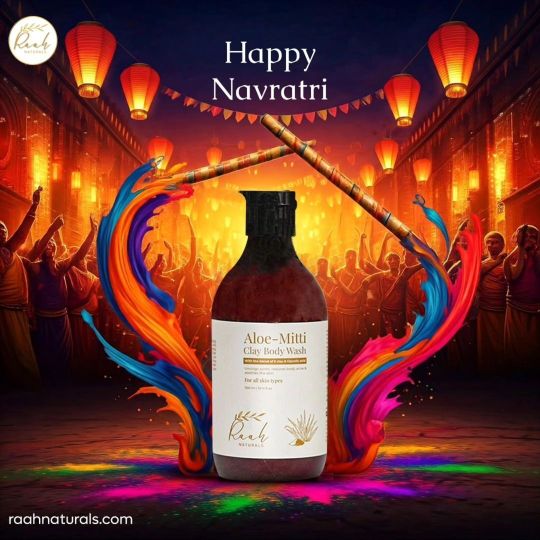
Navratri is here, and we're celebrating in style!💃✨
Join us in honoring the nine nights of the Divine Feminine with our refreshing Aloe Mitti Clay Body Wash.🌿🌿
This gentle, nourishing body wash will leave your skin feeling soft, supple, and rejuvenated, perfect for starting each day of Navratri with a burst of energy. 🌟
Let's embrace the festivities and pamper ourselves with a touch of natural goodness. Happy Navratri!
0 notes
Text
Celebrate Navratri in Style with Priyuja's Vibrant Green Saree!
Navratri is a vibrant celebration of the divine feminine, celebrated by dance, devotion, and colorful attire. Among the many shades that radiate joy during this festival, green stands out as a symbol of prosperity and renewal. A green saree, with its versatile appeal, is a stunning choice that embodies the spirit of Navratri while allowing you to express your unique style in a powerful way.

When choosing a green color saree for Navratri, the fabric plays a crucial role in enhancing comfort and elegance. Luxurious Banarasi silk, soft chiffon, or breathable cotton are excellent choices that not only suit the occasion but also offer a luxurious feel. Each fabric can be adorned with intricate embroidery or zari work, adding a touch of sophistication to your ensemble.
To elevate your look, pair your dark green saree with traditional accessories. Opt for gold jewelry, such as statement earrings and bangles, to complement the rich hue. A matching bindi and embellished clutch can further enhance your festive attire.

Experimenting with different draping styles can make a significant difference in your Navratri look. The classic Nivi style offers timeless elegance, while contemporary draping techniques can add a modern twist. By trying out different styles, you can find the perfect look that flatters your silhouette.
At Priyuja, we are thrilled to present our beautiful green saree collection, perfect for Navratri celebrations. Celebrate Navratri in elegance and tradition with a beautiful green saree from Priyuja!
0 notes
Photo

✨ Celebrate the divine feminine energy this Navratri with grace and style! As we honor the power and strength of Goddess Durga, let your inner light shine with Costozon’s exquisite jewelry. 🌸 Adorn yourself in elegance as you dance through these nine nights of devotion and joy. Wishing everyone a vibrant and prosperous Navratri! 💃💎 #Costozon #HappyNavratri #FestiveJewelry #GoddessDurga #NineNightsOfJoy #NavratriVibes #CelebrateWithStyle #TraditionalElegance #JewelryForFestivals
0 notes
Text
Navratri: A Celebration of Tradition and Culture
Navratri, a vibrant festival celebrated across India, spans nine nights dedicated to the worship of the goddess Durga in her various forms. Each night symbolizes a different aspect of the goddess, and the festival culminates in the celebration of Vijayadashami or Dussehra, marking the victory of good over evil. The rich cultural tapestry of Navratri is woven with traditional music, dance, and, importantly, clothing that reflects the festival's essence.
The Significance of Navratri
Navratri honors the divine feminine energy, represented by Durga, who embodies strength, compassion, and resilience. Each day of the festival is associated with a specific form of the goddess, allowing devotees to engage in diverse rituals and celebrations. The nine days are not just a spiritual journey but also a time for community bonding, joy, and vibrant expressions of faith.
The Tradition of Clothing
One of the most striking aspects of Navratri is the traditional attire worn during the festivities. Each day is often associated with specific colors that symbolize various aspects of the goddess. Devotees dress in beautiful, culturally rich outfits that resonate with the festival’s spirit.
Shivangi Clothing: A Blend of Tradition and Modernity
Shivangi clothing plays a significant role in how people express their devotion during Navratri. The brand embodies the essence of traditional Indian wear, focusing on vibrant colors, intricate designs, and rich fabrics that are ideal for the festive season.
Traditional Garments: Women often wear lehengas, sarees, and chaniya cholis adorned with embroidery, mirror work, and vibrant patterns. Men typically wear kurtas paired with dhotis or pajamas, embracing the essence of Indian culture.
Colorful Attire: Each day of Navratri is associated with a specific color representing different forms of the goddess. For example:
Day 1: Yellow (Shailputri)
Day 2: Green (Brahmacharini)
Day 3: Grey (Chandraghanta)
Day 4: Orange (Kushmanda)
Day 5: White (Skandamata)
Day 6: Red (Katyayani)
Day 7: Blue (Kalratri)
Day 8: Pink (Mahalakshmi)
Day 9: Purple (Siddhidatri)
Embellishments: Traditional attire often features embellishments like sequins, beads, and zardozi work, which not only enhance the beauty of the clothing but also add to the celebratory vibe of the festival.
Comfort and Style: Shivangi clothing emphasizes comfort without compromising on style. The outfits are designed to allow ease of movement, especially during Garba and Dandiya dances, which are integral to the Navratri celebrations.
The Cultural Impact
Navratri is not just a religious observance; it’s a cultural phenomenon that promotes unity and harmony among diverse communities. The colorful clothing worn during the festival reflects the spirit of joy and the rich heritage of India. It fosters a sense of belonging, connecting individuals to their roots and to each other.
The stories and traditions associated with Navratri remind us of the importance of strength, love, and community. As people don their vibrant outfits, they not only honor the goddess but also celebrate their heritage and the timeless customs passed down through generations.
Conclusion
Navratri is a festival of light, joy, and cultural expression. With its rich history and vibrant traditions, it encourages individuals to embrace their roots and celebrate femininity in all its forms. The role of clothing, especially from brands like Shivangi, highlights the beautiful fusion of tradition and modernity, making the festival a memorable experience for all. As we dress up in our finest attire, we are reminded of the divine energy that surrounds us, inspiring us to celebrate life, love, and togetherness during these nine magical nights.
0 notes
Text
NAVRATRI / MAA DURGA PUJA
Navratri and Durga Puja are two major Hindu festivals celebrated with great enthusiasm across India, though their significance and style of celebration vary across regions.
Navratri, meaning "Nine Nights," is a festival dedicated to the worship of Goddess Durga in her nine forms. It typically spans nine days and nights and occurs twice a year – Chaitra Navratri (spring) and Sharad Navratri (autumn). The autumn Navratri is more widely celebrated and culminates in Dussehra or Vijayadashami, marking the victory of good over evil.
The chief deity adorned on these days is the feminine principle of the divinity. Therefore, all the forms of Mother Goddesses are heralded, worshiped and adorned on these days. Called as Shakti, the female energy represents the universe, while Shiva represents the consciousness or soul.
Maa Durga is the ultimate source of power who takes care of the entire universe and feeds it. The Navratri festival glorifies the eternal power of Durga and seeks her blessing and protection. As per the legend, there was a demon called Mahishasura who was a terror to all the three worlds.
As per the boons he had received, he could not be killed by any gods, humans or demons except the feminine energy, which he underestimated to be insufficient to vanquish him. To save all the worlds from his captivity, Mother Durga, assumed a terrific form and waged a war against him for nine days and killed him on the tenth day. The word Durga also means the power which destroys misery and sufferings.
A Sanskrit verse heralds Mother Durga as “Durga Dhurgati Nashini”, the one who destroys afflictions. Worshipping Mother Durga on these nine days is said to confer joy, prosperity, wealth, hope, wisdom, success and lasting happiness.
The Navratri festival is a sort of refreshing and recharging one. Homes, educational institutions, businesses and organizations clean their premises and conduct pujas and worship on these nine days.
Some of the key Aspects:
Goddess Worship: Each of the nine days is dedicated to a different avatar of Durga (Shailaputri, Brahmacharini, Chandraghanta, etc.).
Fasting and Rituals: Devotees observe fasts and perform daily pujas (prayers) with offerings of flowers, fruits, and sweets.
Garba and Dandiya Raas: In Gujarat and Maharashtra, it is celebrated with dance forms like Garba and Dandiya Raas, which are performed in groups, with people wearing colorful traditional attire.
Kanya Pujan: On the eighth or ninth day, young girls are honored as embodiments of the goddess and offered food and gifts.
Dussehra: The tenth day symbolizes the victory of Lord Rama over Ravana or Goddess Durga over the demon Mahishasura.
Durga Puja celebration :
Durga Puja, particularly prominent in West Bengal, Odisha, Assam, and Bihar, celebrates the victory of Goddess Durga over the buffalo demon Mahishasura. It typically spans five days (Shashthi, Saptami, Ashtami, Navami, and Dashami) but preparation and celebrations can last longer.
Some of the key Aspects:
Idol Worship: Elaborate pandals (temporary structures) house stunning idols of Durga, along with her children (Lakshmi, Saraswati, Ganesha, and Kartikeya). Devotees visit these pandals to offer prayers and seek blessings.
Cultural Festivities: Durga Puja is not just a religious event but also a cultural extravaganza. Traditional dances, plays, music performances, and art exhibitions form an integral part of the celebration.
Anjali and Sindoor Khela: Devotees offer Pushpanjali (flower offerings) on Ashtami, and on Dashami, married women apply sindoor (vermillion) on each other as part of Sindoor Khela, symbolizing the goddess's departure to her heavenly abode.
Immersion (Visarjan): The idols are immersed in water bodies, symbolizing Durga's return to Mount Kailash.
While both festivals celebrate the feminine divine and the triumph of good over evil, Navratri tends to have a more pan-Indian presence, while Durga Puja is particularly grand in Eastern India, especially Kolkata. Both festivals bring communities together and inspire a spirit of devotion and joy.

#durga puja festival#festival of india#indian festival#hindu festival#navratri festival#maa durga puja#garba dance#festival of lights
1 note
·
View note
Text
Ambika Mata Temple in Udaipur

Ambika Mata Temple: A Spiritual Jewel of Udaipur
Udaipur, often referred to as the "City of Lakes" or the "Venice of the East," is a city steeped in history, culture, and spirituality. Among its many treasures, the Ambika Mata Temple stands out as a sacred site that attracts both devotees and history enthusiasts alike. Nestled amidst the scenic Aravalli hills, this ancient temple is dedicated to Goddess Ambika, a manifestation of Goddess Durga, symbolizing strength, power, and protection. In this blog post, we delve into the history, architecture, and spiritual significance of the Ambika Mata Temple, exploring why it continues to be a revered destination for pilgrims and tourists alike.
Historical Background
The Ambika Mata Temple is believed to have been constructed during the 10th century by the Paramara dynasty, a Rajput clan that ruled over parts of present-day Rajasthan and Madhya Pradesh. The temple's age-old history is evident in its architecture, which reflects the artistic sensibilities of the time. The Paramaras were great patrons of art and architecture, and their legacy is visible in the intricate carvings and sculptures that adorn the temple. The temple has witnessed several restorations over the centuries, but it still retains its ancient charm, making it a significant cultural landmark.
The temple is located in the village of Jagat, approximately 50 kilometers from Udaipur. Jagat, often referred to as the "Khajuraho of Rajasthan," is known for its collection of ancient temples, with the Ambika Mata Temple being the most prominent among them. The village's historical and cultural significance adds to the temple's allure, making it a must-visit destination for anyone interested in exploring Rajasthan's rich heritage.
Architectural Marvel
The architecture of the Ambika Mata Temple is a testament to the skill and craftsmanship of the artisans of the time. The temple is built in the Nagara style, which is characterized by its tall, curvilinear spires (shikharas) and intricate carvings. The temple's spire is adorned with beautiful sculptures of deities, celestial beings, and mythical creatures, each telling a story from Hindu mythology.
One of the most striking features of the temple is its sanctum sanctorum (garbhagriha), where the idol of Goddess Ambika is enshrined. The idol is carved out of black stone and is depicted with four arms, holding various weapons and symbols of power. The serene expression on the goddess's face contrasts with the fierce imagery of her weapons, symbolizing the dual nature of divinity—both nurturing and protective.
The temple's outer walls are equally impressive, with intricate carvings depicting scenes from the Ramayana and Mahabharata, as well as various episodes from the life of Lord Krishna. The attention to detail in these carvings is remarkable, with each figure meticulously crafted to convey a sense of movement and emotion. The temple also features beautifully carved pillars and ornate doorways, further enhancing its architectural grandeur.
Spiritual Significance
The Ambika Mata Temple is not just a marvel of architecture; it is also a place of deep spiritual significance. Goddess Ambika, also known as Amba or Jagdamba, is worshipped as the mother of the universe, the source of all creation and sustenance. She is believed to be the embodiment of Shakti, the divine feminine energy that pervades the cosmos. Devotees come to the temple seeking the goddess's blessings for strength, protection, and prosperity.
The temple is especially significant during the Navratri festival, a nine-day celebration dedicated to the worship of the goddess in her various forms. During this time, the temple comes alive with devotional activities, including elaborate rituals, chanting of hymns, and vibrant cultural performances. Pilgrims from all over the region flock to the temple to offer their prayers and partake in the festivities. The atmosphere during Navratri is one of fervent devotion and spiritual rejuvenation, making it a truly memorable experience for visitors.
In addition to its religious significance, the Ambika Mata Temple is also considered a site of historical importance. The temple's ancient origins and well-preserved architecture provide valuable insights into the history and culture of the region. It is a place where spirituality and history converge, offering visitors a unique opportunity to connect with the past while experiencing the divine presence of the goddess.
Legends and Myths
Like many ancient temples in India, the Ambika Mata Temple is steeped in legends and myths that add to its mystique. One popular legend associated with the temple tells the story of a demon named Raktabeeja, who was blessed with the ability to multiply every time a drop of his blood touched the ground. The gods were unable to defeat him, and so they prayed to Goddess Ambika for help. The goddess, in her fierce form as Kali, vanquished the demon by drinking his blood before it could fall to the ground, thus saving the world from his tyranny. This legend underscores the goddess's role as a protector of the cosmos, a theme that resonates strongly with devotees.
Another local legend suggests that the temple was built at the spot where a divine light appeared to a king in a dream, instructing him to construct a shrine in honor of the goddess. The king followed the divine command, and the temple was built, becoming a place of worship and pilgrimage. Such stories contribute to the temple's sacred aura, making it a place where the divine is believed to be ever-present.
The Surroundings and How to Reach
The temple's location amidst the serene Aravalli hills adds to its spiritual ambiance. The natural beauty of the surrounding landscape, with its rolling hills, dense forests, and tranquil atmosphere, provides a perfect backdrop for meditation and reflection. The area is also rich in biodiversity, making it a great spot for nature lovers and wildlife enthusiasts.
To reach the Ambika Mata Temple, visitors can take a road journey from Udaipur, which is well-connected by air, rail, and road. The drive to the temple is an experience in itself, with picturesque views of the countryside and the Aravalli hills along the way. The nearest airport is Maharana Pratap Airport in Udaipur, and from there, one can hire a taxi or take a bus to reach the temple.
For those interested in exploring more of the region, the village of Jagat offers several other ancient temples and historical sites worth visiting. The area's rich cultural heritage, combined with its natural beauty, makes it a perfect destination for a day trip or a spiritual retreat.
0 notes
Text
Festival Ready: The Ultimate Guide to Indian Jewelry for Every Occasion

The vibrant tapestry of Indian culture is woven with countless festivals, each a celebration of life, tradition, and community. And what's a celebration without the perfect outfit? Indian festivals are renowned for their dazzling displays of color, and jewelry plays a vital role in completing the festive ensemble.
This ultimate guide explores the fascinating world of Indian festival jewelry, offering insights into the perfect pieces for every occasion. So, get ready to adorn yourself with the magic of tradition and embrace the festive spirit in style!
Dazzling Beginnings: Navratri and Dussehra
Navratri, the nine-day festival celebrating the divine feminine, and Dussehra, the triumph of good over evil, mark the beginning of the festive season.
Jewelry Must-Haves: Opt for vibrant bangles in auspicious colors like red and green. Jhumkas (dangling earrings) with intricate designs and temple jewelry with mythological motifs are perfect choices. For Dussehra, consider adding a statement necklace or a bold maang tikka (headpiece) to your look.
The Festival of Lights: Diwali
Diwali, the festival of lights, signifies the victory of light over darkness and knowledge over ignorance.
Jewelry Must-Haves: Gold takes center stage during Diwali. Opt for elegant gold necklaces, delicate jhumkis, and kamarbands (waist belts) to complement your festive attire. Consider Kundanjewelry, featuring intricately set gemstones, for an extra touch of sparkle.
A Celebration of Colors: Holi
Holi, the vibrant festival of colors, is a joyous occasion for revelry and letting go.
Jewelry Must-Haves: Embrace the playful spirit of Holi with colorfuljewelry! Meenakari pieces, featuring vibrant enamel work, are perfect for this occasion. Experiment with playful earrings, colorful bangles, and statement rings to match your vibrant outfit.
Celebrating the Harvest: Pongal and Onam
Pongal and Onam, harvest festivals celebrated in South India, are occasions to express gratitude for nature's bounty.
Jewelry Must-Haves: Temple jewelry with intricate floral motifs and traditional gold jewelry with Lakshmi (goddess of prosperity) or elephant pendants are popular choices. Opt for lightweight and elegant pieces that complement the traditional attire worn during these festivals.
Beyond the Bling: The Significance of Festival Jewelry
Indian festival jewelry is more than just an adornment. Each piece often carries a deeper meaning or symbolism.
Gold: Represents prosperity, purity, and good luck.
Red: Symbolizes good fortune, energy, and auspiciousness.
Temple Jewelry: Often features motifs of deities and mythological figures, invoking blessings and divine protection.
Embrace the Tradition: Tips for Choosing Your Festival Jewelry
Consider the Occasion: Each festival has its own unique traditions. Research the preferred styles and symbolism associated with the specific celebration.
Comfort is Key: Festivals often involve long days of celebration. Choose comfortable pieces that won't weigh you down.
Balance is Everything: While festive jewelry is meant to add a touch of grandeur, avoid over-accessorizing.
Embrace Heirlooms: Family heirlooms passed down through generations add a sentimental touch to your festive attire.
With this guide in hand, you're now equipped to choose the perfect Indian jewelry to complete your festive ensemble. So, immerse yourself in the vibrant spirit of Indian festivals, adorned with the magic of tradition!
Visit Our website
0 notes
Text
Navratri Nights in Style: Stunning Sharara Suit Inspiration
Navratri, a nine-day festival that honors the divine feminine, is a brilliant riot of color, music, and dancing. Join the गरबा (Garba) celebrations in traditional garb. For many women, the ideal Navratri costume is a gorgeous Sharara suit, a classic Indian combination that exudes elegance and flare.
A Sharara for Every Night.
The Sharara's beauty comes from its adaptability. Here's how to wear a Sharara on each of the nine Navratri nights:
Day 1 (Goddess Shailputri): Wear a bright orange Sharara, which represents Shakti (power). Choose a flowy georgette kurta with beautiful gold embroidery for a sense of majesty.
Day 2 (Goddess Brahmacharini): Wear a classic white Sharara to exude peace. Delicate floral embroidery or threadwork adds beauty and is ideal for a puja ceremony.
Day 3 (Goddess Chandraghanta), Go bold with a royal blue Sharara, which represents peace and knowledge. For a glamorous nighttime look, wear it with silver jewelry and a sequined dupatta.
Day 4 (Goddess Kushmanda), Celebrate the brilliance of yellow with a sunshine-yellow Sharara. Mirror work or gotta patti stitching provides a festive touch, perfect for Garba night.
Day 5 (Goddess Skandamata), Wear an emerald green Sharara, which represents development and prosperity. Choose a silk or velvet fabric for a luxury look, ideal for a special evening event.
On Day 6 (Goddess Katyayani), channel the strong force of red with a magnificent crimson Sharara. This powerful outfit is completed with gold jewelry and a contrasting dupatta.
On Day 7 (Goddess Kalaratri), embrace the mystery of purple with a regal purple Sharara. Zari embroidery or ornate borders offer a sense of grandeur to a festive gathering.
Day 8 (Goddess Mahagauri), Choose a delicate pink Sharara to represent peace and love. Delicate lacework or pearl decorations give a feminine and sophisticated appearance.
Day 9 (Goddess Siddhidatri), Wear a stunning multicolored Sharara to celebrate the end of Navratri. This allows you to combine all of the festival's brilliant colors into a single spectacular ensemble.
The internet has a large assortment of Sharara suits to fit your taste and budget. You can buy sharara suit online in India from different platforms like Sandhyshah,Myntra, Amazon and Flipkart.
Choose showy earrings and a bracelet set to accent the stitching. Comfortable wedges or embellished sandals provide a festive vibe.
With a magnificent Sharara costume and a positive attitude, you're set to celebrate Navratri in elegance and grace!
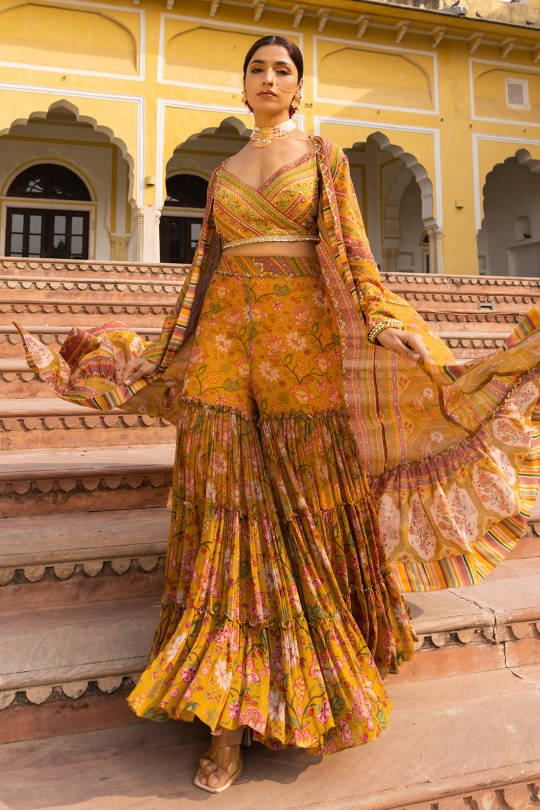
0 notes
Text
Top 5 differences between Chaitra Navratri and Sharad Navratri
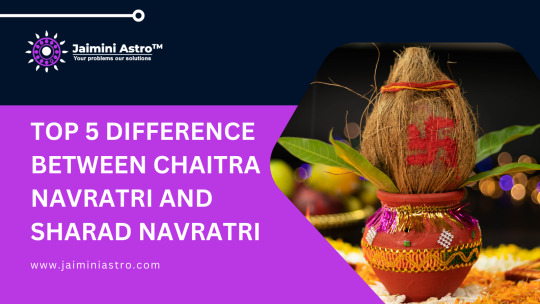
Navratri, meaning"nine nights," is a vibrant Hindu festival that resonates across India. This festival is the time of great honor of Durga; the goddess represents strength, protection, and victory of good over evil. Though most readily associated with the grand autumnal celebration of Sharad Navratri, another equally important festival is that of Chaitra Navratri, celebrated during the spring season. United by the spirit of praying to Durga, still Sharad and Chaitra Navratri are poles apart in meaning, traditions, and ways of celebration.
Come along and take you through the journey of the two Navratris: Will be taking you through the two fascinating Navratris and revealing for you the differentiating features of each.
Differences Between Chaitra And Sharad Navratri
But while Chaitra Navratri and Sharad Navratri are both ways to honor the divine feminine, they're characterized by a few pretty definite differences. Here's a closer look at five points of difference.
1.Seasonal :
Chaitra Navratri: A springtime celebration (March-April) that coincides with nature's renewal and the beginning of the Hindu New Year in some regions. Imagine blossoming flowers and a sense of fresh beginnings filling the air as devotees honor Durga.
Sharad Navaratri: The autumnal (September-October) festival connected with the conclusion of the rainy season and a shift to cooler weather. To thank God for the harvest and the changing season to a more comfortable one.
2. Significance and Story:
Chaitra Navratri: These nine days resemble new beginnings and certainly welcome the springtime. This time in some parts is also to celebrate the birth of Lord Rama (Ram Navami). This really is the time of embracing new opportunities and welcoming a fresh cycle.
Sharad Navratri: the day when Goddess Durga killed the demon Mahishasura. This festival reminds us that even in the face of immense challenges, truth ultimately win.
3. Divine Focus:
Chaitra Navratri: The Navratri is dedicated to the nine forms of the goddess Durga. It gives a devotee an opportunity to get connected with the variety of aspects of the divine feminine, where each form represents another strength or quality.
Here are the 9 forms names :
Shailaputri (First Day)
Brahmacharini (Second Day)
Chandraghanta (Third Day)
Kushmanda (Fourth Day)
Skandamata (Fifth Day)
Katyayani (Sixth Day)
Kalaratri (Seventh Day)
Maha Gauri (Eighth Day)
Siddhidatri (Ninth Day)
Sharad Navratri: This festival celebrates nine nights with the nine forms of the Goddess Durga, symbolizing the nine forms of divine femininity. Devotees take blessings of the particular forms of Durga according to their personal requests and wishes, much similar to Chaitra Navratri.
4. Festive Flair:
Chaitra Navratri: Many people observe it in a relatively low profile of devotion, carrying out pujas (prayers), chanting mantras, and sometimes even going on fasts. Style of celebration may vary from one place to the other; however, generally, the same is relatively low keyed in nature so that a show of devotion can be made.
Sharad Navratri: A vibrant festival that involves grand pujas, colorful decorations, and regional dances (such as Garba/Dandiya Raas of Gujarat). These are the nine days when people meet and greet each other, represent their culture, and dance.
5. National Spotlight:
Chaitra Navratri: Generally, people following traditional Navratri are from Northern and Western India, with a less national profile than traditional Navrjsonth. The people undertaking fasting might also be less strict during Chaitra Navratri, as they might prefer undergoing partial fasting or not at all.
Sharad Navratri: Widely celebrated across India with immense national festival, connecting regional boundaries. Fasting is more commonly observed during Sharad Navratri, with some devotees following strict practices.
These features reflect the rich and manifold diversity of Hindu traditions. So, this involves the idea of different ways or modes of connecting to the divine feminine, celebrating the power of Durga, and lapping in the change of seasons every Navratri.
The Essence of Navratri
Chaitra Navratri and Sharad Navratri have the core resemblance to each other. These are the festival times that honor the divine femininity, similarities with the powerful Goddess Durga. It is that nine-day period when her devotees take the blessings they need for prosperity and fulfillment within the coming year.
Fasting, although not mandatory, is a very common practice seen during both Navratris. Some devotees go to the extent of observing very strict fasting, in which the person does not even take water, while some others to the veg diet or some food limitations, like eating only fruits and falahari vegetables. This practice is believed to clean the body and mind, providing spiritual growth. It also includes meditation and the chanting of mantras.
Meditation helps in making the mind calm and gives inner peace to the one doing so. On the other hand, the chanting of mantras helps the devotees get connected with the divine power of Durga. All these practices bring a place of spirituality and self-discovery.
During Navratri, if you're curious about what your future holds and want to understand your life better, our online horoscope service can help. We provide accurate daily horoscopes, online Kundali readings, and daily astrology insights to help you make the most of your day and plan your future. Now's the time to take a new step towards understanding yourself and your path in life better. Get in touch with us today to start making positive changes in your life.
#marriage astrologer#kundli predictions#daily astrology#astrology by date of birth#jyotish#accurate daily horoscopes#online horoscope#jaiminiastro
0 notes
Text
Navratri Outfit Style Guide
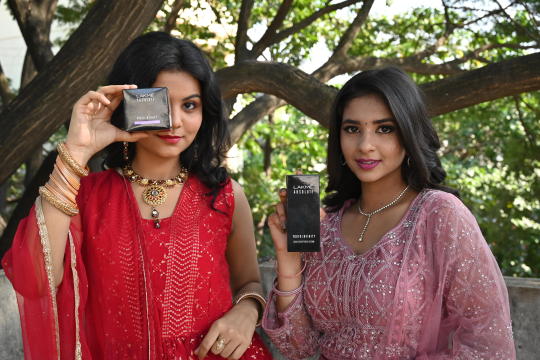
Navratri, a vibrant and widely celebrated festival in India, is a time to embrace the divine feminine energy and dance with abandon to the rhythmic beats of Garba. What makes this festival even more special is the opportunity to dress up in exquisite traditional attire. If you’re wondering what to wear for Navratri, worry not. In this comprehensive guide, we’ll explore various Navratri outfit ideas for women and delve into the art of styling them to perfection. Read More...
#NavratriFashion#FestiveOutfits#DanceInStyle#TraditionalAttire#NavratriGlam#IndianFestivalWear#EthnicElegance#StylingTips#NavratriDance#GlamorousLehengas#SareeSensation#FusionFashion#StatementJewelry#NavratriBeauty#ColorfulOutfits#IndianTradition#NavratriAccessories#FestivalHair#BoldMakeup#NavratriCelebration
0 notes
Text
5 Must reads for Navratri 2023 | Frontlist
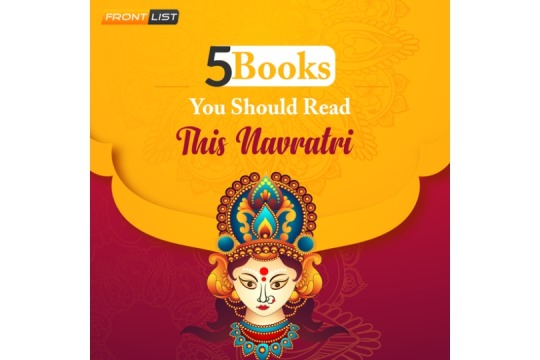
Navratri, one of India's most vibrant and spiritually significant festivals, celebrates the divine feminine energy in its various forms. As we prepare to embark on this nine-day festival of worship and devotion, there's no better way to immerse ourselves in its essence than by reading books that explore the significance of Navratri and the powerful stories surrounding it. Here are five books that you should consider reading during this Navratri season.

1. The Devi Bhagavata Purana" by Vedavyasa: This ancient scripture is a profound exploration of the divine feminine, focusing on the goddess Durga. It narrates her various incarnations, her battles against powerful demons, and the ultimate triumph of good over evil. Reading this Purana during Navratri provides a deep understanding of the festival's spiritual significance.
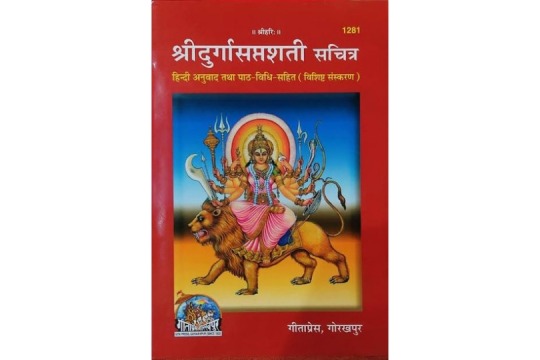
2. "Durga Saptashati" by Markandeya Rishi: Also known as the Chandi Path, this sacred text is dedicated to Goddess Durga. It consists of 700 verses divided into three sections, each of which depicts different facets of the goddess. Reading the Durga Saptashati during Navratri is a common spiritual practice that invokes the blessings of the Divine Mother.
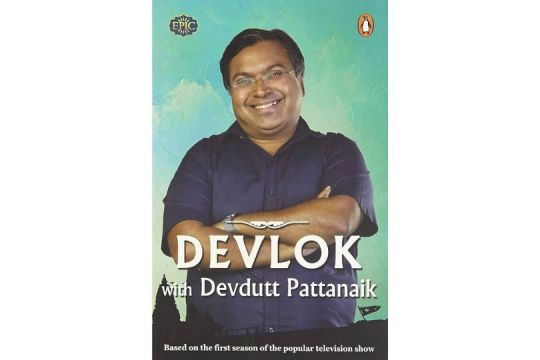
3. "Devlok with Devdutt Pattanaik" by Devdutt Pattanaik: Devdutt Pattanaik, a renowned mythologist, explores various aspects of Hindu mythology in this book. It's an excellent choice for those interested in understanding the symbolism, rituals, and stories associated with Navratri and other festivals. Pattanaik's lucid writing style makes complex concepts accessible to all readers.

4. "Shakti Rising" by Kavitha M. Chinnaiyan: "Shakti Rising" is a contemporary book that explores the essence of the divine feminine energy, Shakti. It draws from ancient scriptures, mythology, and psychology to help readers connect with the transformative power of the goddess. This book guides you through practices and meditations that can deepen your spiritual experience during Navratri.
5. "Nine Nights: Navratri - The Festival of Nine Nights" by Shailaja Khanna: For those seeking a comprehensive guide to Navratri, this book provides valuable insights. It covers the festival's history, significance, rituals, and regional variations, making it an essential read for anyone wanting to immerse themselves fully in Navratri celebrations.
Navratri is a time of spiritual reflection, devotion, and celebration. Reading books that delve into the rich mythology, symbolism, and rituals associated with this festival can deepen our understanding and enhance our connection with the divine feminine energy. Whether you choose to explore ancient scriptures, contemporary interpretations, or comprehensive guides, these books offer a valuable opportunity to enrich your Navratri experience and embrace the profound wisdom of India's spiritual heritage. Happy reading and Happy Navratri!
1 note
·
View note
Text
TOP DESTINATIONS TO EXPLORE PANDALS AND EXPERIENCE NAVRATRI FESTIVAL IN GUJARAT
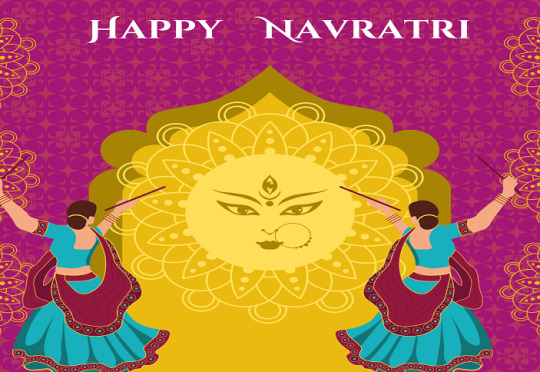
During Navratri, Gujarat hosts some of the most spectacular Garba events in the country. Garba, a traditional dance style rooted in Gujarat, India, serves both as a religious and social gathering. Originating in Gujarati villages, Garba was (and still is) performed in communal spaces at the heart of the community, with active participation from every member. This communal dance form embodies both a social gathering and a religious ritual, reflecting the rich cultural tapestry of Gujarat.
The grandest and longest dance extravaganza globally, Navratri, prominently features Garba. This Hindu festival, meaning “nine nights,” pays homage to Goddess Durga and her nine diverse manifestations, ranging from the fierce Kaalratri wielding a sword to the benevolent Kushmanda who created the universe. Navratri is celebrated in various regional ways across India, but in Gujarat, it comes alive through the rhythmic dance performances that begin in the evening and extend into the late night, all in reverence to Goddess Durga. Dancing barefoot during Garba is a symbolic gesture of showing respect for the Earth, as the foot is the part of the body that connects with the sacred mother of all planets. It’s believed that the Earth imparts life-giving energy through our feet, and by dancing barefoot, participants establish a direct connection with this life force.
Garba, rich in symbolism, represents the feminine divine and the cyclical nature of life, making it a captivating and spiritually enriching experience during Navratri in Gujarat.
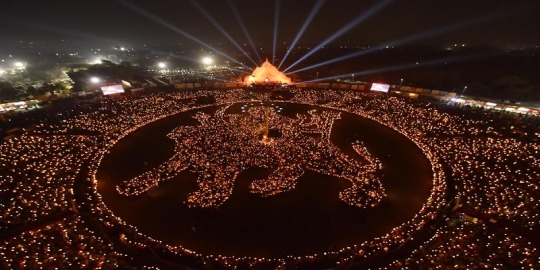
Best Places in Gujarat during Navratri are:
Ahmedabad
Surat
Rajkot
Vadodara
Gandhinagar
Ahmedabad Garba Celebration
Ahmedabad, the vibrant heart of Gujarat, undergoes a remarkable transformation as the golden sun sets below the horizon. With the fading of daylight, the city awakens to a spectacle that borders on the mystical, a true tale of magic spun during the enchanting Dandiya nights of Navratri.
As twilight surrenders to the inky canvas of the night sky, Ahmedabad metamorphoses into a living, breathing tapestry of vivid colours and infectious rhythms. The city comes alive with an energy so spirited that it feels like an enchantment in itself. Here, the very soul of Gujarat resonates with the rhythmic beats of the dhol, while melodious strains of folk music weave stories that transcend time.
Under this star-studded canopy, crowds of revellers gather, bedecked in resplendent attire that mirrors the rich cultural heritage of the region. Each step and twirl is a nod to traditions passed down through generations, a jubilant celebration of Gujarat’s roots. As dandiya sticks collide in harmonious chaos, dancers move in graceful circles, caught in the irresistible whirlpool of joy and camaraderie. And the air itself seems to hum with anticipation, heavy with the tantalising fragrance of traditional delicacies, enticing every passerby.
But amidst this vibrant tapestry of sights, sounds, and scents, it’s the pandals that truly beckon as beacons of Navratri fervor. Within these splendid structures, the very essence of Dandiya Raas comes to life. They are not mere venues; they are portals to a realm where the spirit of Navratri dances unbridled, inviting you to lose yourself in the exhilarating world of Ahmedabad’s Dandiya nights.
Now you can list the pandals belowClub NameAddressDescriptionLavish Greens Party Plot32, Off, Sindhu Bhavan Marg, opp. Shreyaa Atlanta, PRL Colony, Thaltej, Ahmedabad, Gujarat 380058Lavish Greens Party Plot offers an enchanting setting for a memorable Garba night. Dance under the starry sky surrounded by lush greenery, and immerse yourself in the true spirit of Navratri.Rajpath ClubSarkhej – Gandhinagar Hwy, Bodakdev, Ahmedabad, Gujarat 380059Rajpath Club is a prestigious destination for Navratri celebrations, offering an unforgettable Garba night experience in a grand setting.RAJWADI RAASShree Balaji Farm, Ahmedabad[Insert Address]THE GARBA NIGHT with DJ NIHARFRIZBee, AhmedabadDJ Nihar is set to make you groove to electrifying beats at THE GARBA NIGHT, combining contemporary and classic tunes for a night of non-stop Garba excitement.Zankar Navratri 2k23 X Rangeelo Raas Season 4RK Farm & Party Plot, AhmedabadZankar Navratri, in collaboration with Rangeelo Raas, guarantees an unforgettable Garba experience that blends tradition with a modern twist.
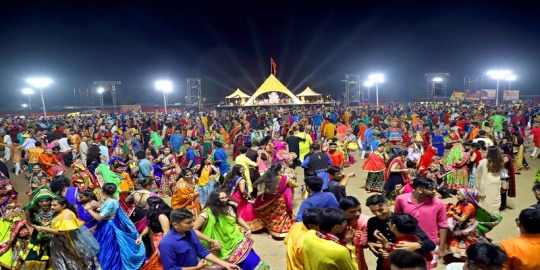
Surat Garba Celebration
In the heart of Gujarat, where the River Tapi whispers tales of centuries past, Surat awakens to a dazzling symphony of lights and music. As the sun bids adieu to the day, this bustling city on the western coast dons a vibrant cloak of colours and rhythms, heralding the arrival of its renowned Dandiya nights. It’s a transformation that transcends the ordinary, a spellbinding spectacle that invites all to participate in its enchantment.
Underneath the velvety curtain of the night sky, Surat’s streets and squares become the canvas for a spectacle of grand proportions. Crowds, dressed in their resplendent best, gather as the heartbeats of Gujarat echo through the air. The melodious tunes of folk music blend seamlessly with the rhythmic thumping of dholaks and the infectious clatter of dandiya sticks. It’s a heady concoction of sound and spectacle, an electrifying mix that infuses the city with an undeniable magic.
As dancers twirl and whirl, their graceful movements creating patterns of joy, the air is alive with excitement. The fragrance of traditional Gujarati delicacies, served up by street vendors, wafts through the night, enticing taste buds and senses alike. It’s a sensory feast that elevates the experience beyond mere celebration.
But amidst this carnival of colours and sounds, it’s the pandals that beckon, each a vibrant oasis amidst the festivities. Within their ornate confines, the very soul of Dandiya Raas comes alive. These are not mere venues; they are portals to a world where tradition meets modernity, where music meets movement, and where Surat’s spirit dances in the moonlight.
So, as the city of Surat readies itself for yet another magnificent Dandiya night, allow us to unveil some of the enchanting pandals where the true magic of this celebration awaits:
Now, you can list some of the prominent pandals belowVenueAddressDescriptionRajwadi Party Plot1, Charbhuja Arcade, nr. Rajawadi Party Plot, Sweet Home Society, Amroli, Surat, Gujarat 394107Rajwadi Party Plot offers a regal setting where tradition and festivity come together. It promises an exquisite Dandiya experience in a majestic ambiance.SMC Party Plot Umra5RH3+6G3, Maa Thakur Bhai Desai Marg, Near Umra Police Station, Meghdoot Society, Athwalines, Athwa, Surat, Gujarat 395004SMC Party Plot Umra provides a spacious and lively venue where Surat’s Dandiya fervor reaches its pinnacle. It’s the perfect place to dance the night away in a vibrant atmosphere.RITU’S DANCE STUDIOSCHOOL, 124, CANAL WALK SHOPPERS, OPP L P SAWANI, Vesu, Surat, Gujarat 395007RITU’S DANCE STUDIO is the heartbeat of Surat’s dance scene, where enthusiasts come together to celebrate Dandiya in style, offering a dynamic and spirited environment.Kesharkunj Party PlotJahanigirpura Main Road, Near Raj Green Height, Opp. Nandanvan Rowhouse,, Rander, Surat, Gujarat 395005Kesharkunj Party Plot is an idyllic setting amidst nature’s embrace, providing an immersive Dandiya experience under the open sky, where you can dance beneath the stars.Platinum Hall SIECCPalsana Chokdi, Khajod, Sarsana, Surat, Gujarat 395007Platinum Hall SIECC is a sophisticated venue where Dandiya meets elegance, ensuring a night of dance, music, and grandeur, with an ambiance that exudes sophistication and charm.
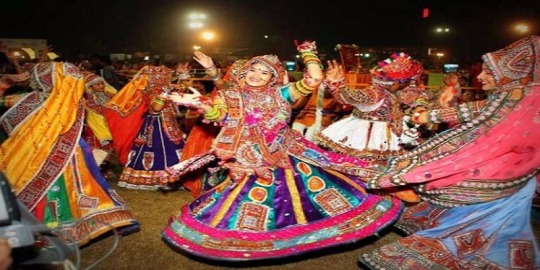
Rajkot Garba Celebration
Nestled in the heart of Gujarat, amidst a tapestry of golden fields and timeless traditions, Rajkot comes to life with a rhythmic fervour that is simply enchanting during its much-awaited Dandiya nights. As the sun dips below the horizon, this vibrant city sheds its daytime attire and dons a resplendent cloak of culture and celebration. The moon rises high, and with it, the spirit of Rajkot awakens, echoing with melodies of folk music and the enchanting rhythms of Dandiya.
Under the vast expanse of the starry sky, the streets of Rajkot transform into dance floors where thousands gather in colourful attire, their feet moving in graceful harmony to the beats of the dhol. It’s as if the very air shimmers with excitement, and every corner of the city comes alive with the promise of merriment. The fragrance of traditional Gujarati snacks drifts through the air, enticing revellers and passersby alike.
Amidst this vibrant tapestry, the pandals stand tall and inviting, each one a portal to a world of celebration and joy. Within their ornate confines, the essence of Dandiya Raas is embodied, where tradition, culture, and contemporary revelry merge seamlessly. These are not mere venues; they are sanctuaries of dance, where every twirl and spin writes a new chapter in the story of Rajkot’s Dandiya nights.
So, as Rajkot prepares for another enchanting Dandiya season, allow us to introduce you to some of the splendid pandals where the magic unfolds:
Now, you can list some of the prominent pandals below, continuing the story of Rajkot’s spirited celebration.VenueAddressDescriptionDev Group Dandiya Raas ClassesAmin Road, 150 Feet Ring Rd, Corner, Near Mangalam Hospital, Rajkot, Gujarat 360005Dev Group Dandiya Raas Classes offer a unique opportunity to learn and perfect the art of Dandiya, ensuring that you can participate in the festivities with skill and confidence.Parthraj Club150 Feet Ring Rd, opp. Giriraj Hospital, New College Wadi, Mahavir Park, Rajkot, Gujarat 360005Parthraj Club is a lively destination for Dandiya Raas, where you can revel in the celebratory atmosphere and dance the night away in a vibrant and spirited setting.Pratilok Party Plot150 Feet Ring Rd, opp. Satyam Party Plot, Nana Mava, Rajkot, Gujarat 360005Pratilok Party Plot is an exquisite venue where Dandiya nights come alive with fervour. It offers a grand setting to immerse yourself in the joy of Dandiya and cultural celebrations.Radius Lawns2nd Ring Rd, Rajkot, Gujarat 360005Radius Lawns provide a sprawling and beautiful space for Dandiya festivities. It’s a place where tradition meets modernity, ensuring a memorable and grand Dandiya experience.Pyramid Party Plot6QW4+FF5, Patidar chock, Road, Kankot, Rajkot, Gujarat 360005Pyramid Party Plot is a vibrant venue where Dandiya nights turn into an exhilarating celebration. It promises an energetic atmosphere, where every dancer becomes part of the excitement.
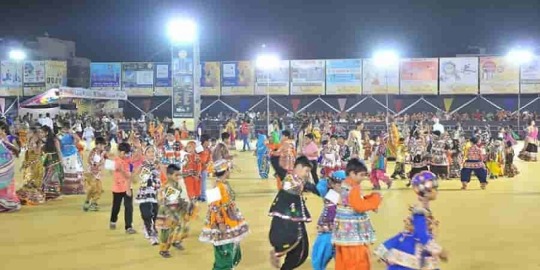
Vadodara Garba Celebration
In the heart of Gujarat, where history and culture intertwine with modernity, Vadodara sets the stage for a spectacle like no other during its annual Dandiya nights. As the sun gently sets, the city undergoes a breathtaking transformation, shedding its daytime demeanour to embrace a vibrant cloak of celebration and tradition. Underneath the canopy of stars, Vadodara comes alive with the intoxicating rhythms of Dandiya.
The streets, which once bustled with daily life, now serve as open-air dance floors where thousands gather, adorned in resplendent traditional attire. The sound of dholaks reverberates through the air, weaving a symphony of melodies that transcends time. Every footfall resonates with the spirit of Gujarat’s rich heritage, as dandiya sticks click in joyful unison. The very atmosphere seems to hum with anticipation, thick with the aroma of delicious Gujarati snacks that beckon revellers and passersby alike.
But amidst this dazzling tapestry, the pandals emerge as grand gateways to an enchanting world of celebration. Within their elaborate structures, the essence of Dandiya Raas flourishes, where tradition and modern revelry coalesce. These are not just venues; they are sanctuaries of dance, where every twirl and step writes a new chapter in the grand tale of Vadodara’s Dandiya nights.
So, as Vadodara readies itself for another spectacular Dandiya season, allow us to introduce you to some of the magnificent pandals where the magic unfolds:
Now, you can list some of the prominent pandals below, continuing the story of Vadodara’s spirited celebration:VenueAddressDescriptionLukshmi Vilas Palace Heritage GarbaLukshmi Vilas Palace, Cricket Ground, Moti Baug, Vadodara, Gujarat 390001Lukshmi Vilas Palace Heritage Garba offers a truly royal Garba experience within the palace’s magnificent surroundings, where culture and elegance meet in perfect harmony.V K Events & Vaibhav Kurpe International OrchestraE 144, Part- Near, 2, Pani Tanki Rd, Dipika Society, Karelibagh, Vadodara, Gujarat 390018V K Events & Vaibhav Kurpe International Orchestra promises a diverse musical extravaganza, encompassing Garba, LagnaGeet, and instrumental music for a culturally rich celebration.United Way Garba Ground7585+GJ6, Atladara, Vadodara, Gujarat 390012United Way Garba Ground is a sprawling venue where Garba enthusiasts unite for a night of vibrant dancing and revelry, fostering unity and community spirit.Maa Shakti Garba Ground85G2+85F, Subhanpura, Vadodara, Gujarat 390023Maa Shakti Garba Ground is a place where devotion and celebration intertwine, creating an atmosphere that is both spiritually uplifting and energetically festive.Mayur Party PlotBhavanipura Garba Ground, opp 390002, LG Nagar, Mahesana Nagar, Nizampura, Vadodara, Gujarat 390024Mayur Party Plot offers a picturesque setting for Garba festivities amidst nature’s embrace, providing an enchanting backdrop for an unforgettable celebration.
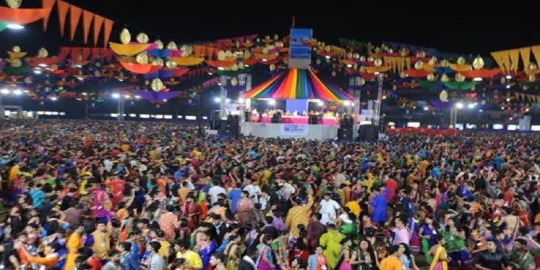
Gandhinagar Garba Celebration
In the heart of Gujarat, amidst the grandeur of planned urbanity, Gandhinagar emerges as a captivating canvas for one of the state’s most anticipated spectacles—its annual Dandiya nights. As the sun bows to the horizon, this meticulously designed city comes alive with a tapestry of lights and music that unfurls like a spellbinding narrative. It’s a transformation that beckons residents and visitors alike to embrace the spirit of Gujarat’s beloved festival.
Under the vast expanse of the night sky, Gandhinagar’s streets and squares become stages where the city’s pulsating energy converges. People from all walks of life, adorned in vibrant traditional attire, gather with a shared purpose—to dance and celebrate. The melodious strains of folk music and the rhythmic beats of dholaks resonate through the air, summoning the city’s denizens to join in the joyous festivities.
The atmosphere is electric, charged with anticipation and camaraderie. Dandiya sticks collide in harmonious chaos as dancers move in graceful unison, their spirits uplifted by the collective jubilation. The air is fragrant with the aroma of traditional Gujarati delicacies, drawing revellers and wanderers to savour the culinary delights.
But amidst this splendid spectacle, it’s the pandals that stand as beacons of celebration, each one a doorway to a world where tradition fuses seamlessly with modern revelry. These are not just venues; they are portals to a realm where music and dance are the universal languages, and every twirl is a step into the heart of Gandhinagar’s vibrant culture.
So, as Gandhinagar prepares for another enchanting Dandiya season, allow us to introduce you to some of the splendid pandals where the magic unfolds:
Now, you can list some of the prominent pandals below, continuing the story of Gandhinagar’s spirited celebration.VenueAddressDescriptionThanganat Garba ClubSector 11, Gandhinagar, Gujarat 382010Thanganat Garba Club is a hub of traditional Garba celebrations, where cultural heritage and dance unite to create a spirited atmosphere of celebration and joy.Garba GroundSector 22, Gandhinagar, Gujarat 382022Garba Ground is a sprawling venue that invites the community to come together and dance under the open sky, fostering a sense of unity and communal celebration.Lions Club of GandhinagarSector 2D, Sector 2, Gandhinagar, Gujarat 382003Lions Club of Gandhinagar hosts Garba festivities that reflect the spirit of service and community, offering an opportunity for joyous celebrations with a purpose.
Laganwadi sector 23Sector 23, Gandhinagar, Gujarat 382024Laganwadi sector 23 is a place where weddings and Garba celebrations intertwine, creating an atmosphere that blends love, culture, and vibrant dance traditions.Gandhinagar Cultural Forum Garba GroundsSector 6, Gandhinagar, Gujarat 382006Gandhinagar Cultural Forum Garba Grounds provide a platform for cultural exchange and celebration, where music and dance bring people together in a festive spirit.
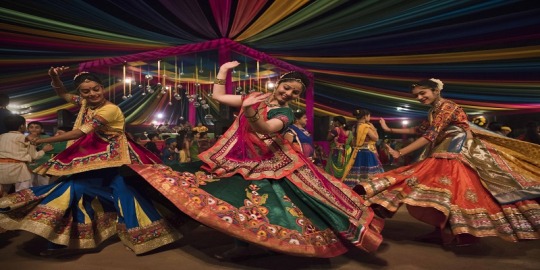
Experience the enchanting world of Garba nights in Gujarat like never before with Geniefie Trip Planner app. With its user-friendly interface and comprehensive features, Geniefie makes it effortless to create your perfect itinerary for this culturally rich journey. From discovering the best Garba events to sampling local cuisine and exploring the vibrant markets, Geniefie has got you covered. Don’t miss the chance to immerse yourself in the rhythmic celebrations and spiritual energy of Navratri in Gujarat. Let Geniefie be your trusted companion, guiding you through an unforgettable Garba adventure that will leave you with cherished memories of this extraordinary festival in the heart of India. Start planning your Geniefie-guided Garba experience today and let the magic of Gujarat’s Navratri unfold before you!
Share this:
Twitter
Facebook
Like this:
Share On
Check out the Geniefie time planner app!
Download Geniefie app on the Play Store, and start Unboxing your city today. Download App
0 notes
Text
Celebrate Navratri in Style with Priyuja's Vibrant Yellow Saree
Navratri, a vibrant festival dedicated to worshipping the divine feminine, is a time for celebration, dance, and cultural expression. Among the myriad colors that symbolize joy and festivity, yellow is a popular choice for attire during this auspicious occasion. A yellow saree embodies Navratri's spirit and adds a radiant touch to your wardrobe.
Yellow Banarasi sarees represent happiness, energy, and positivity, making them perfect for the lively celebrations of Navratri. Whether you opt for a traditional Banarasi silk saree, a chic cotton piece, or a flowy georgette saree, the bright hue will make you shine during the festivities. Each saree can be beautifully paired with intricate accessories like statement earrings and bangles to complete your festive look.
When choosing a yellow silk saree for Navratri, consider the fabric and design that best suits your style. From elegant embroidery to detailed zari work, there are countless options to explore. Not only will you look stunning, but you'll also feel connected to the festival's rich traditions.
At Priyuja, we offer a stunning yellow saree collection, which is perfect for Navratri. Our carefully curated designs celebrate the essence of the festival while ensuring you stand out in any crowd. Illuminate your Navratri celebrations with a beautiful yellow color saree and embrace the season's joy!
0 notes
Text
9 Ways to Choose the Right Navratri Chaniya Choli Colors for a Spiritually-Inspired Celebration

Navratri, a vibrant and joyous festival celebrated in India, is a time of devotion, dance, and merriment. During these nine nights dedicated to the worship of the Hindu goddess Durga, people adorn themselves in colorful traditional attire to honor the divine feminine energy. The choice of colors for Navratri chaniya cholis holds deep spiritual significance and adds to the festive fervor. Let's explore the nine colors associated with each day of Navratri and their symbolism, and learn how to select the right chaniya choli colors that reflect your personality and style.
The 9 colors associated with each day of Navratri and their symbolism:
Day 1 - Yellow: The color yellow symbolizes brightness, positivity, and new beginnings. It represents the energy of the goddess Shailputri, the embodiment of nature's power.
Day 2 - Green: Green represents fertility, harmony, and prosperity. It is associated with the goddess Brahmacharini, who signifies devotion and love.
Day 3 - Grey: Grey represents balance, stability, and protection. This color is linked to the goddess Chandraghanta, known for her courage and grace.
Day 4 - Orange: The color orange signifies enthusiasm, creativity, and spiritual awakening. It represents the goddess Kushmanda, the creator of the universe.
Day 5 - White: White represents purity, peace, and clarity. It is associated with the goddess Skandamata, who signifies motherly love and compassion.
Day 6 - Red: Red symbolizes power, passion, and energy. It is linked to the goddess Katyayani, who embodies fearlessness and strength.
Day 7 - Royal Blue: Royal blue represents intelligence, wisdom, and stability. This color is associated with the goddess Kalratri, the protector who destroys negativity.
Day 8 - Pink: Pink signifies love, beauty, and affection. It is linked to the goddess Mahagauri, who represents purity and serenity.
Day 9 - Purple: Purple represents spirituality, enlightenment, and transformation. It is associated with the goddess Siddhidatri, the bestower of knowledge and divine grace.
How to choose the right chaniya choli colors for your individual personality and style:
When selecting chaniya choli colors for Navratri, consider your personality and personal style. Each color carries its own energy and can complement different individuals. Let’s look at the below ways to choose a right chaniya choli color as per your personality and style:
Reflect on your personality traits: Consider your temperament and characteristics. If you're lively and outgoing, vibrant colors like orange or red may suit you. For a calm and serene personality, white or pink may be more appealing.
Explore color symbolism: Understand the symbolism behind each color and choose one that resonates with your intentions and aspirations. For instance, if you seek transformation and spiritual growth, purple might be an ideal choice.
Consider your complexion: Certain colors can enhance your natural beauty. For instance, warm hues like yellow and orange can complement darker skin tones, while pastel shades like pink and green can enhance fairer complexions.
Experiment with contrasts: If you want to make a bold statement, consider contrasting colors. For example, pairing a yellow choli with a royal blue ghagra can create a visually striking ensemble.
Embrace personal preferences: Ultimately, choose colors that make you feel confident and comfortable. Listen to your intuition and follow your instincts when selecting your Navratri chaniya choli colors.
Tips for accessorizing your chaniya choli to complement the colors you choose:
Accessorizing your chaniya choli can elevate your Navratri style and complement the chosen colors. Below listed are a few tips that can enhance your holistic elegance.
Jewelry: Select jewelry that complements your chaniya choli and adds a touch of elegance. Ethnic Gujrati style articifial, silver or gold ornaments such as chandelier earrings, necklaces and bangles can elevate your beauty holistically.
Footwear: Choose footwear that matches your chaniya choli's color palette. Embroidered mojaris, colorful juttis, or embellished sandals are popular choices that can add a traditional touch to your ensemble.
Dupatta or scarf: If your chaniya choli doesn't include a dupatta, consider adding one in a contrasting or complementary color. It can be draped gracefully over your shoulder or used as a headscarf.
Hairstyle and makeup: Coordinate your hairstyle and makeup with your outfit. Opt for traditional hairstyles like braids, buns, or open curls, and use makeup that enhances your features while complementing the overall color scheme.
Where to find beautiful chaniya choli in the 9 colors of Navratri:
Finding the perfect chaniya choli for Navratri is an exciting part of the celebration. You can explore various options to discover beautiful outfits in the nine Navratri colors:
Local markets: Visit local markets known for their traditional attire and ethnic wear. These markets often offer a wide range of chaniya cholis in different colors, designs, and price ranges.
Online platforms: Numerous online platforms and marketplaces specialize in ethnic wear. You can browse through their collections, filter by color, and find chaniya cholis that suit your style.
We at Sannari have multiple options available of Navratri style ghagra choli for women.
We hold the belief that each individual possesses a unique identity, and our designs should effectively embody this notion.
Provided below are some of our designs for your future reference.

Jazzy Rayon Garba Wear Chaniya Choli For Navratri
Let us delve into the elaborate details and exclusivity of our exquisite creation, the rayon garba wear chaniya choli. This ensemble is meticulously designed to capture attention and create a lasting impression.
Crafted from high-quality rayon fabric, the chaniya choli exudes a luxurious feel while ensuring comfort and ease of movement. The fabric's soft texture adds to the overall appeal of the outfit.
What truly sets this garment apart is its remarkable ajrakh print and bandhej print. The ajrakh print, renowned for its traditional and ethnic charm, features intricate patterns and motifs inspired by the rich cultural heritage of India. This print lends a sense of artistry and authenticity to the ensemble, making it a standout piece.
Additionally, the bandhej print adds a touch of elegance and sophistication to the chaniya choli. Bandhej, also known as tie and dye, involves a meticulous process of tying and dyeing the fabric to create unique and mesmerizing patterns. The combination of the ajrakh and bandhej prints results in a visually captivating ensemble that truly catches the eye. The model images provided are solely representative, serving as an inspiration to visualize how the chaniya choli may look when worn. The actual product may differ slightly in appearance, allowing each wearer to embrace their own individual style.

Fantastic Cotton Garba Wear Chaniya Choli For Navratri
Experience the enchantment of a fairy tale coming to life with this exquisite garment. As you gracefully adorn yourself in this captivating attire, the story begins to unfold, revealing your inherent beauty. Immerse yourself in the allure of ethnic fashion with this stunning chaniya choli, crafted from fantastic cotton fabric.
Every detail of this lovely ensemble exudes elegance and charm, enhanced by the intricate traditional prints and exquisite traditional work adorning its surface. The garment is thoughtfully designed, featuring a matching choli (blouse) and dupatta (scarf) that perfectly complement the overall aesthetic.
Conclusion:
Navratri is a celebration of colors, spirituality, and cultural traditions. Choosing the right chaniya choli colors adds to the festive spirit and helps you connect with the divine energy associated with each day of the festival. By considering your personality, exploring color symbolism, and experimenting with accessories, you can create a visually captivating and spiritually-inspired Navratri style. Embrace the vibrant hues, express your individuality, and immerse yourself in the joyous celebration of Navratri with the perfect chaniya choli in hand.
#navratri chaniya choli colors#navratri fashion colors for navratri#how to choose navratri colors#navratri colors#ghagra choli for women#navratri ghagra choli
0 notes
Text
India: Unveiling the Land of Mystique and Marvels
Welcome to our blog, where we embark on a captivating journey to unveil the mystique and marvels of India. Nestled in South Asia, India is a land that has captivated travelers for centuries with its diverse landscapes, ancient traditions, and rich cultural heritage. Join us as we explore the enchanting tapestry that makes India a truly remarkable destination.
One of the first things that strikes visitors to India is its incredible diversity. From the majestic Himalayan mountain ranges in the north to the sun-kissed beaches of Goa in the west, from the vast deserts of Rajasthan to the lush backwaters of Kerala, India offers a breathtaking array of landscapes. Each region has its own unique charm and attractions, ensuring that every traveler finds something to marvel at.
India's cultural heritage is deeply rooted in its ancient history and the influence of various dynasties and civilizations. The country is home to numerous UNESCO World Heritage Sites that showcase its rich cultural tapestry. The magnificent Taj Mahal in Agra stands as a testament to eternal love and is a masterpiece of Mughal architecture. The stunning temples of Khajuraho, with their intricate carvings depicting scenes of love, passion, and spirituality, leave visitors awestruck. The ancient caves of Ellora and Ajanta, adorned with stunning rock-cut sculptures and paintings, offer a glimpse into India's artistic past.
India's religious diversity is equally astounding. The country is a melting pot of religions, with Hinduism, Islam, Buddhism, Sikhism, Jainism, and Christianity all finding a place of reverence. The sacred city of Varanasi, situated on the banks of the holy Ganges River, is a spiritual epicenter for Hindus and a place where life and death intertwine. The Golden Temple in Amritsar, the holiest shrine of Sikhism, welcomes visitors from all walks of life to experience its peaceful ambiance and partake in the community kitchen that serves free meals to all. The spiritual teachings of Buddhism are embedded in the serene monasteries of Ladakh and Sikkim, while the ancient churches of Goa reflect the colonial legacy of Christianity in India.
India's festivals are a riot of colors, music, and joyous celebrations. Diwali, the festival of lights, illuminates the country as homes and streets are adorned with diyas (oil lamps) and fireworks light up the night sky. Holi, the festival of colors, is a time of vibrant revelry as people joyously throw colored powders and water at each other, breaking down barriers and spreading happiness. Navratri, celebrated with energetic dance performances and devotional music, honors the divine feminine energy, while Eid and Christmas are celebrated with equal fervor, showcasing the country's secular fabric.
The traditional arts and crafts of India are a treasure trove of creativity and skill. Intricate handwoven textiles, such as the vibrant silk sarees of Varanasi and the intricate embroidery of Gujarat, showcase the craftsmanship passed down through generations. The art of pottery, metalwork, and wood carving flourishes in different regions, each with its unique style and motifs. Traditional dance forms like Kathak, Bharatanatyam, and Odissi, with their intricate footwork and graceful expressions, mesmerize audiences, while classical music, with its intricate ragas and soul-stirring melodies, transports listeners to a realm of tranquility.
India's culinary delights are a sensory journey for the taste buds. The country's cuisine is as diverse as its culture, with each region offering its own distinctive flavors and specialties. From the fiery curries of North India to the fragrant biryanis of Hyderabad, from the spicy street food of Mumbai to the delectable seafood of Kerala,
0 notes